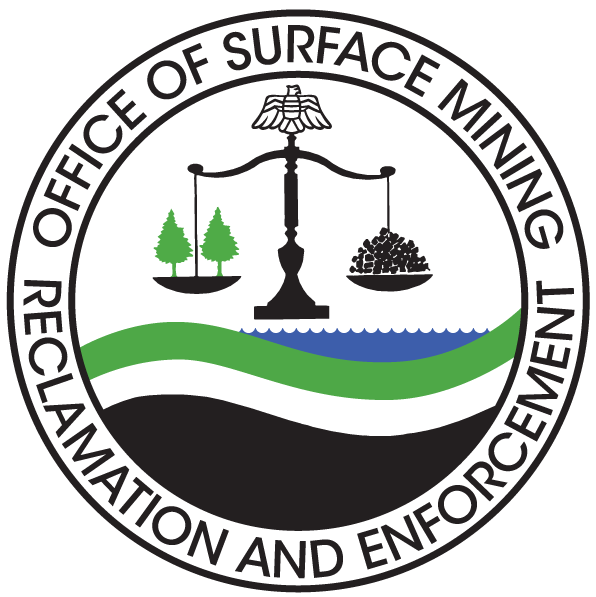Flight 93 National Memorial
In October 2012, OSMRE provided more than $300,000 to the Flight 93 National Memorial. The grant was used to clean up acid mine drainage from an underground coal mine near the Flight 93 crash site.
The money came from civil penalties levied against mine operators that violated federal mining law. The money was used to benefit both the environment and visitors. Learn more on how these funds were used in the video on OSMRE's Flight 93 Memorial Grant.
The site sits about five miles from Shanksville, PA, and the memorial’s design acknowledges that Flight 93’s final resting spot is tied closely to coal mining. Note the use of black, signifying coal’s place in this part of Pennsylvania, on the benches and the representation of the aircraft’s flight path.
The memorial is surrounded by an area known as Lambert’s Run, named after the family who owned much of the area. This map shows the various projects now under way to make the memorial a more complete acknowledgement of the sacrifice of the passengers and crew.
After a year of study, OSMRE determined that aerating the water from an existing pump well system would help separate the iron, increasing water quality. The study also indicated the site and the environment would benefit more with the construction of a wetland area, including a wide diversity of water-borne plants, similar to this previously built pond. Plants are very effective in binding the iron to themselves, removing the mineral from the water.
Earlier passive methods of cleaning the acid tainted water are effective to a great extent, but not completely. The Families of Flight 93, who now own Lambert’s Run, have asked the various groups to minimize the footprint of the treatment plan, which poses a challenge both from an engineering and aesthetic standpoint.
Flight 93 Site Plan
The Flight 93 site plan drawings, prepared by the US Department of Agriculture, were produced as part of the OSMRE grant.
Tour the Treatment Site
Illustrations were developed to depict what is occurring at the Flight 93 Memorial within the pond-wetland treatment system to remove iron from the mine water.
View the illustrations here:
Enhanced Solids Fe Removal Illustration
Flight 93 Memorial Tour Stops 1-5
- Stop 1: Venturi Site - Pumped Discharge
- Stop 2: Outlet Pond 3/Inlet to Pond 4
- Stop 3: Inlet of Engineered Wetland
- Stop 4: Wetland Outlet
- Stop 5: Manganese Removal Bed
Water Treatment Systems
The Flight 93 Passive Treatment System involves both the removal of enhanced solids iron using ponds as a wetland and the removal of manganese at circumneutral pH using limestone beds.
Achieving total metal concentrations of less than 2.0 mg/L can be very challenging at mine drainage treatment sites. Recent implementation of total maximum daily load and other water quality standards have lowered effluent criteria for total metal concentrations to less than 2.0 mg/L in many watersheds. Historically, low total metal concentrations in the effluent have been achieved by using a high treatment pH or the use of flocculants. Both treatment strategies result in increased treatment costs and additional labor to ensure proper dose.
An extremely effective alternative to these strategies is to use a pond followed by a wetland to enhance solids removal. This treatment strategy can achieve total suspended metal concentrations of less than 2 mg/L.
The use of wetlands for mine drainage treatment has existed for several decades. The specific application of using wetlands to enhance solids removal to achieve less than 2 mg/L of solids concentrations is relatively new. Ponds and clarifiers use gravity as the primary settling mechanism. This mechanism is only effective if particles flocculate (growth of particles) to form non-buoyant suspended solids that can be pulled to the bottom of a pond by gravity. At times, small amounts of suspended particles fail to flocculate to form dense particles and remain in the water as “pin floc.” Pin Floc is often responsible for effluent violations when effluent criteria for total metals are less than 2 mg/L. Pin Floc contain charged surfaces (see diagram) that promotes electrical repulsion between particles and prevents particles from flocculating to form a non-buoyant floc. The overall surface charge on iron hydroxide floc is typically net positive at pHs below 8 (see graph). Humic organic matter (HOM) in wetlands is instrumental in helping to reduce electrical repulsion and allowing particles to settle by releasing humic carboxyl and phenolic groups into the water column.
Like a commercial anionic organic polymer, these groups contain a negative charge that will neutralize the positive surface charge of the iron hydroxide particle, promoting flocculation and settling. Furthermore, a dense growth of wetland plants improves settling through the physical impaction of particles into plant material. The impaction causes flocculated particles to lose momentum and initiate settling, much like a baffle in a pond. Combined, the mechanisms can routinely achieve suspended metal concentrations of less than 2.0.
RESULTS
The pond-wetland treatment system on memorial grounds treats a 1,200 gallon-per-minute discharge to a total iron concentration of less than 1.0 mg/L.
The most common method used to achieve manganese effluent standards is to use an alkali chemical to increase pH to 9.5 and precipitate Manganese Hydroxide. While effective, this method results in elevated chemical consumption and increased sludge production due to various nuisance reactions at occur at high pH.
During the past 15 years, the use of limestone beds to passively remove manganese at a pH between 6 and 8 has been refined. The technology uses biotic reactions to precipitate manganese onto the surface of limestone. These beds have been proven to be easy to construct, highly effective, and low maintenance. Several sites have produced NPDES compliant water for over 15 years.
RESULTS
The manganese removal bed, installed on the Flight 93 memorial grounds, treats a 80 gallon-per-minute discharge to a total manganese concentration of less than 0.5 mg/L.

